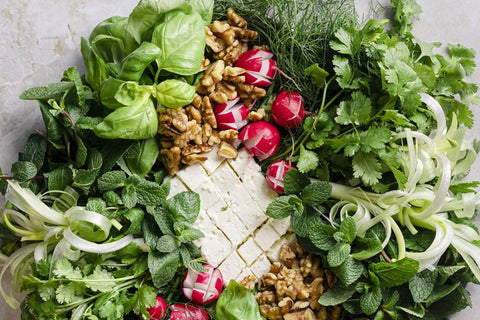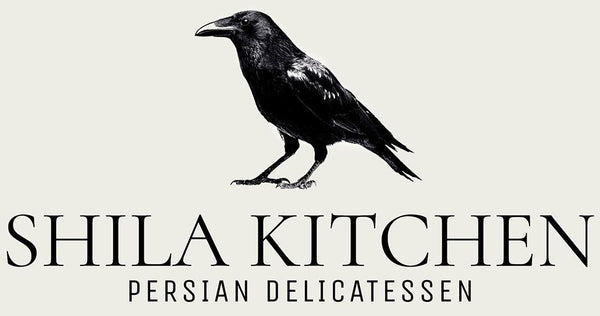While spices may be the first to spring to mind when one thinks of Persian cuisine - it is the culture’s vast selection of herbs that give their food the unique, vibrant flavours they’re often known for. From making beverages to cooking main courses, herbs play a major role in any Iranian kitchen, granting a fresh aroma and taste to any main dish, drink, or entrée.
"Sabzi Khordan"
The Persian word for fresh herbs is "sabzi" (سبزی); its root word being “sabz”, which means “green”. The term is thus used in a similar vein to the English phrase, “greens” – which means leafy, green vegetables.

The herbs eaten with Persian meals are typically always fresh, though dried herbs are also commonly used as a substitute in cooking when fresh ones aren’t available. Herbs may also be served as a fresh side dish to main courses – a platter known as “sabzi khordan”. Basil, parsley, mint, and radishes are among the most popularly used ingredients.

Sabzi khordan may simply accompany a main meal, or could also be served with naan bread, feta cheese, and walnuts.
Essential types of herbs
Persian dishes explore a wide range of herbs, with the following among the most common:
- Sweet basil: Native to Iran, this herb offers a sweet yet aromatic taste and functions as a complimentary ingredient to the more “peppery” herbs of sabzi khordan. Basil leaves are also commonly used in dry form, as they maintain their flavour well and can be used in various soups or sauces.
- Mint: Popularly used in various food and drink, including tea and yoghurt or cucumber-based side dishes. This herb is also known for its “medicinal” benefits in aiding stomach cramps or indigestion, and can grow quite rapidly under ideal conditions.
- Cilantro: Used fresh in Persian stews (i.e. Ghormeh Sabzi), sauces, and soups, cilantro offers a strong, slightly citrus-like taste to any dish or condiment.
- Dill weed: Often added as a fresh ingredient to sabzi khordan, dill weed is favoured for strong aroma and ability to season most Persian dishes. It is commonly used in herb dishes such as Sabzi Polo and Kuku Sabzi.
- Parsley: Forming a core part of Persian cuisine for thousands of years, parsley plays a major role in most herbal dishes - including sabzi khordan, ghormeh sabzi, and sabzi polo. It is also commonly used as a garnish when finely chopped and sprinkled on top of sauces, soups, and main courses.
- Tarragon: Another main addition to sabzi khordan, tarragon is also popularly used in Persian stews or in pickle dishes (i.e. Khiar Shoor). It also commonly believed to help with high blood pressure, toothache, stomach cramps, and menstrual pains.
- Fenugreek: Also known as “shanbalileh” in Persian, fenugreek is an essential herb that adds a distinctive flavour and aroma to many traditional Persian dishes. It can used in both dried and fresh forms, adding depth and complexity to the taste of various soups, sauces, stews, and even teas.
- Garlic chives: Typically used in salads, stews, and soups, garlic chives can be used fresh or finely chopped – adding a mild garlic taste and a flavourful depth to its dishes. These herbs are most commonly seen in traditional Persian dips such as “mast-o-khiar” (yoghurt and cucumber dip) and “torshi-e-gerdu” (pickled vegetable relish).
Add a burst of flavour to your dishes today!
Give your dishes a bit of flair by playing around with popular Persian herbs and spices - or by serving them alongside main dishes, “sabzi khordan” style. Alternatively, you could explore our takeaway selection or dine-in menu for a taste of some of Shila’s aromatic creations, made fresh every day.
